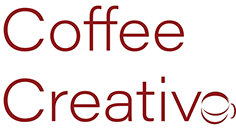Twitter job losses and why advertisers should be concerned
Image by Mike MacKenzie
It is said that content is king – and so it is. The trouble is, it’s king in an online realm were fake news stories and provocative, derogatory content are ever-present.
The content king resides in an online world that can be quite a toxic environment. There’s the rub. Placing advertising in a toxic environment may not be good for your brand.
If the exit of advertisers from Twitter is anything to go by, then there is already a growing concern that consumers are beginning to lose trust in brands that advertise on controversial sites or alongside inappropriate content. The concern is, although it is still uncertain, that Twitter may well become the flagship of an increasingly toxic social media fleet.
Discontent is necessary for progress
There is an old saying that “Restlessness is discontent — and discontent is the first necessity of progress.” If that maxim is true, then perhaps Musk is setting the sales for a miraculous Twitter recovery.
Here’s the thing, Twitter has struggled despite posting $5 billion revenue in 2021. On the upside, that’s an 35% increase year-on-year despite amounting to a net loss of $221 million in 2021. That net loss has an upside too as it is an 80% reduction on the $1.1 billion loss it reported in 2020.
From an advertising and marketing perspective, Twitter has 206 million daily active users and 38 million users in the United States. That’s why 92% of Twitter’s revenue came from advertising in 2021.
The optimist would argue that there are glimmers of hope for Twitter as a member of the social media litter that Google and Facebook lead.
However, with Musk’s massive cuts to Twitter’s workforce and threat of making verified Twitter users pay or lose their coveted blue checks there are potentially significant stormy waters ahead.
In the short term, there is the potential that these moves could reduce Twitter’s costs and increase its revenue, and that could conceivably open the way for a return to the public markets in a few years’ time, via an I.P.O.
A watching brief
The trouble is, with advertisers quitting Twitter or taking a wait and watch approach the company’s advertising revenues are under threat. If Musk does try to run Twitter on the cheap, by, for example, slashing its content-moderation division, he’ll likely stumble into further controversies and continue to alienate advertisers and users.
Here’s the potential problem that Twitter faces if it cannot continue to adequately moderate content and so creating a potentially harmful social media environment that includes abusive and derogatory content about brands and false or misleading brand brand information that will remain unchallenged. Harmful social content can spread instantly to millions of people and spiral into a crisis for brands.
That situation is likely to leave users more sceptical towards organisations and their leadership because of the rise in false or harmful comments made online. Moreover, there is the risk that users will hold brands responsible for addressing inappropriate or harmful comments made on their owned social media pages.
The problem is magnified because users have high expectations of brands, expecting that they will address inappropriate or harmful content instantly. Brands must be able to act quickly.
If dramatic job cuts with Twitter result in below expectation customer service than brands may well be stuck with the negative impact of living in a toxic environment. That is why advertisers are perhaps more than a little shy of spending scarce advertising money on Twitter, especially when social media offers plenty of alternative platforms.
Coffee Creative Consideration
Image by duncan cumming
Right now, the Coffee Creative advice to clients not already advertising on Twitter – hold off on spending – wait and watch as the potential risks to brand are considerable. And for those already on Twitter, the most optimistic you could be is to not increase your advertising spend, but allow an agency like Coffee Creative to take a higher level active watching brief, ready to pull advertising if Twitter becomes toxic.



